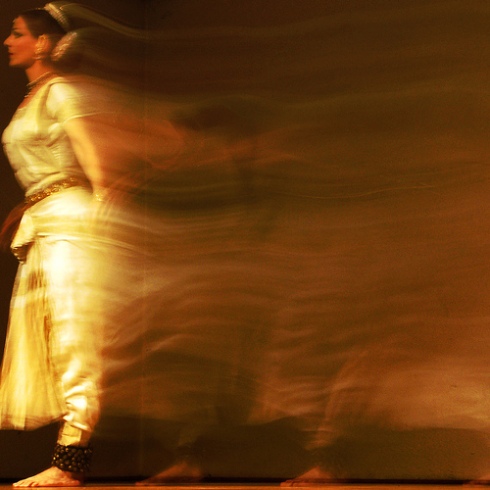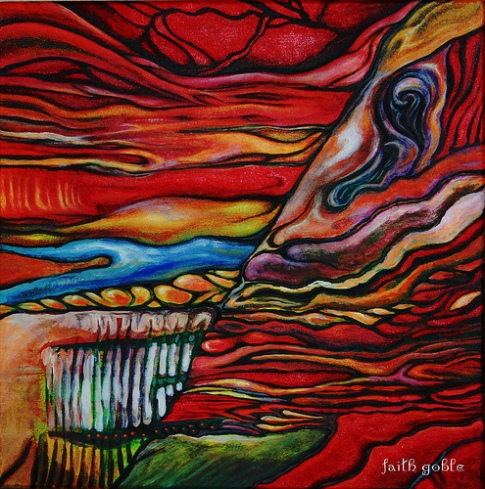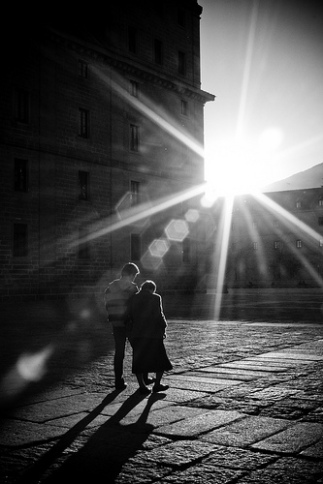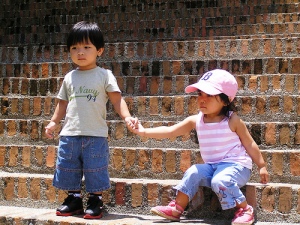photo by premasagar on flickr.com
Have you ever taken a class you were not interested in just because it fit your schedule just right? When I went to theology school about ten years ago every semester I took a class offered on Monday nights because of my work schedule. One semester the only course offered on Monday night was an Old Testament course called Wisdom Literature. I groaned. I was something of a Bible geek and I had no idea what the course was about. I expected learning about spiritual poetry or something.
To my surprise, the class hit me over the head with texts like our first reading today about a god-Woman participating in creation. Are you kidding? This woman is called Sophia and she dances through numerous texts of the Old Testament. In a world today where women are disproportionately poor, unschooled and abused, it would be good news enough to have a powerful female face for God to talk about. But Sophia also has a compelling story to tell about God, about us and about salvation. As more and more women reflect on theology in our day, Sophia’s story is on the march again. Her story is even causing many to rethink concepts like the Trinity. Let’s see how Her story intersects with our own this Trinity Sunday.
A Different View of the Human Condition
As I traced Sophia’s activities and sayings through the Old Testament, it started to dawn on me that Sophia sees me differently than other Biblical writers. Today’s text is typical as She says: “I was daily God’s delight, rejoicing before God always, rejoicing in God’s inhabited world and delighting in the human race.” (Did Sophia miss the memo that I am a sinner, cut off from God and in desperate need of a rescue?) This one sentence says a lot and is supported by many varied texts: She is about every single day, not just the big holy moments. She is for everyone, not just those thought to be chosen. She honors creation. She thinks you are utterly delightful. Sophia says our most basic problem that needs salvation is that we are asleep to God’s vibrant presence. She wants to wake us up.
If doctor Sophia diagnoses you and me as spiritually asleep, what are we to wake up to? Concepts of the Trinity that focus on images of two male characters and a dove out there somewhere, or that worry about how Jesus is “consubstantial” with the Father, are sure to make us drowsy. The Book of Wisdom says that Sophia “pervades and penetrates all things” and that she is “more mobile than any motion.” (Wis. 7:24). As theologians have been reintroducing Sophia to the world, there has been a gradual shift in our understanding of the Trinity. Instead of focusing on mysterious concepts of Three being One, we are beginning to see in the Trinity an invitation to actually participate in the love flowing between Father and Son, a love that pervades and penetrates all things and is more mobile than any motion.
The Dance of Love
One way to test new insights is to see if it bubbles up anywhere else. Sophia’s message checks out. The mystics have been talking Sophia language for centuries. Her message pops up in the culture as well. In 1963 an obscure English songwriter, Sydney Carter, wrote new spiritual lyrics to a popular Shaker tune. He thought average church folks would be offended and he was shocked that it became one of the most popular hymns of all time. He called it “Lord of the Dance” and the song taps into a deep longing for Sophia energy:
I danced in the morning when the world was begun,
I danced on the Moon and the Stars and the Sun.
I came down from heaven and I danced on the Earth,
At Bethlehem I had my birth.
This verse could have come straight from our first reading. The last line of the chorus says “I will lead you all in the dance said He.”
Richard Rohr is among many spiritual writers who now refer to the Trinity as a “Dance of Love.” Rather than seeing God as a static presence “out there” to be pleased, obeyed, even appeased, he sees a God in a relationship, ever new, on the move. Let’s learn together to participate in the love flowing within the Trinity.
We then have a choice to make. We are like awkward guests at a wedding reception standing just outside the dance floor. We wonder if we should stay where we are or risk participating in the Dance that is the relationship between the Creator, the Redeemer and the Giver of Life. What does that step toward participation look like for you and for me? The step probably has something to do with the three legged stool we talk about here: choosing love for ourselves, our faith community and/or our world. Let’s help each other discover what participation in God looks like, and then support each other on the step into the Dance.
Amen
George von Stamwitz
Liturgy for Trinity Sunday
Saturday Evening, May 25, 2013
Focus Text: First reading, Proverbs 8: 22-31 (Sophia at creation)




